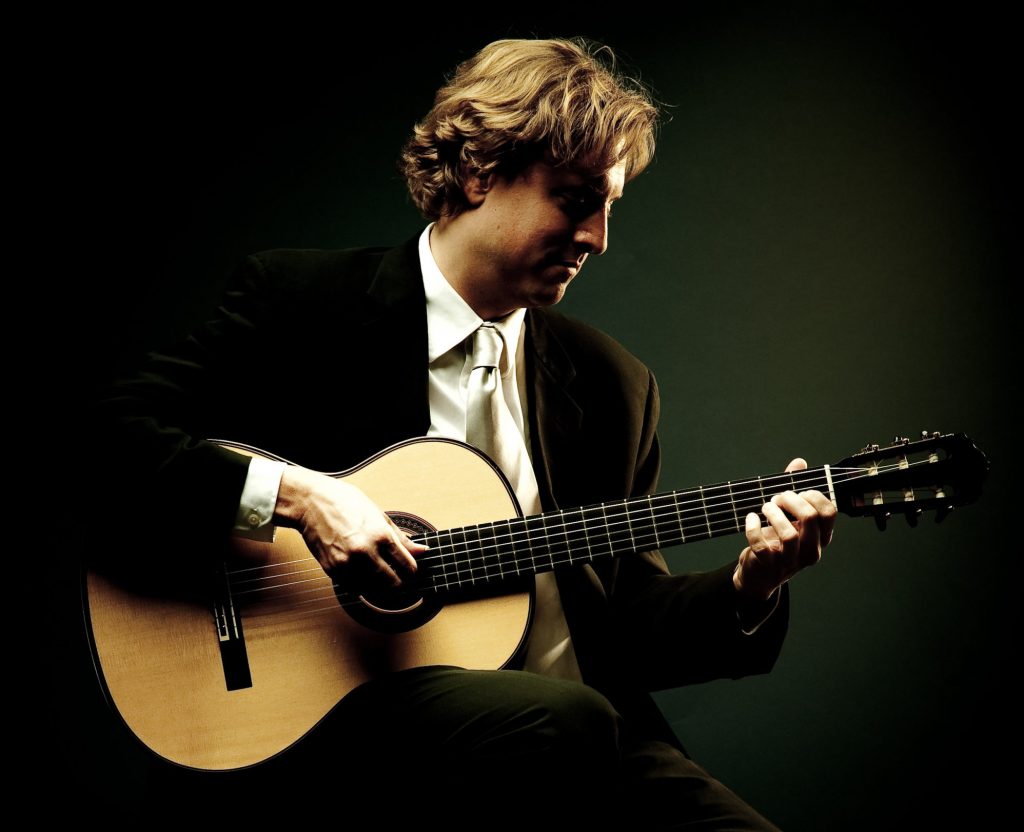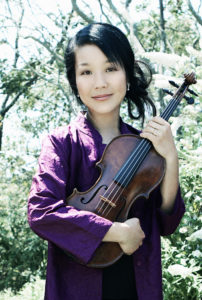by Kevin McLaughlin

The night began with one of Andrés Segovia’s favorite works, Albéniz’s Torre Bermeja, a short piano piece that, in the hands of a skilled player like Vieaux at least, seems more suited to the guitar. His touch throughout was light, particularly in the repeated sixteenth-note triplets, which imparted buoyancy and optimism.
Vieaux was also a genial presence speaking from the stage. At well-timed junctures he provided informative but approachable guides to pieces, composers, or any personal connections to the music. Vieaux is an established exponent of his instrument — a CIM product and faculty member of 28 years, a Grammy winner, and a face of the festival itself — so his comments were appropriate and well received.
Vieaux gave a lucid interpretation of Frank Martin’s Quatre Pièces Brèves. Saying he often features works of Bach in his recitals, he announced Quatre Piéces as a modern surrogate. Martin’s ever-shifting harmonies and spasmodic tempi can feel a little disorienting to the listener, but Vieaux’s playing was focused, precise, and crisply articulated, satisfying any craving for Bach or something else. The second section, “Air,” with its slow dotted rhythms and melancholic melody, was just the vehicle to let the guitarist’s assets of tonal control and vibrato shine through.
Pat Metheny wrote Four Paths of Light for Vieaux, who sees it as less programmatic than abstract. Whatever the composer’s intentions, the four-movement, nineteen-minute work served as the technical and emotional center of gravity of the evening. Metheny’s textures recall composers in the Spanish guitar tradition — arpeggiation undergirding melody — but with rock-and-roll intensity. In parts one and three, silvery melodies reveal themselves from the surrounding fabric of motor-sixteenths. Parts two and four are more atmospheric, with lovely melodic figures emerging and gaining in altitude to the end. Vieaux showed an uncanny ability to sweeten and distinguish melodic lines amid accompanimental textures. Emotional and dynamic pacing helped maintain interest throughout.

Histoire is Piazzolla’s attempt to capture a century of the tango. Not having played this repertoire together for eighteen years, the players showed obvious enjoyment in their collaboration. Oblivion benefitted from Sato’s sumptuous, languorous tone and the guitarist’s steady rhythmic drive.
The final piece, Fernando Bustamante’s Misionera, is another that has been purloined from the piano repertoire, and this arrangement, by the Argentine Jorge Morel, also seemed unequivocally suited to the guitar. Vieaux’s endless reserve of technique served the music’s spirit, and the formal program concluded with satisfying panache.
After three bows, Vieaux came back onstage to play Pure Imagination from Willy Wonka. It was a fitting, if unexpectedly sweet ending.
Published on ClevelandClassical.com June 6, 2023.
Click here for a printable copy of this article



